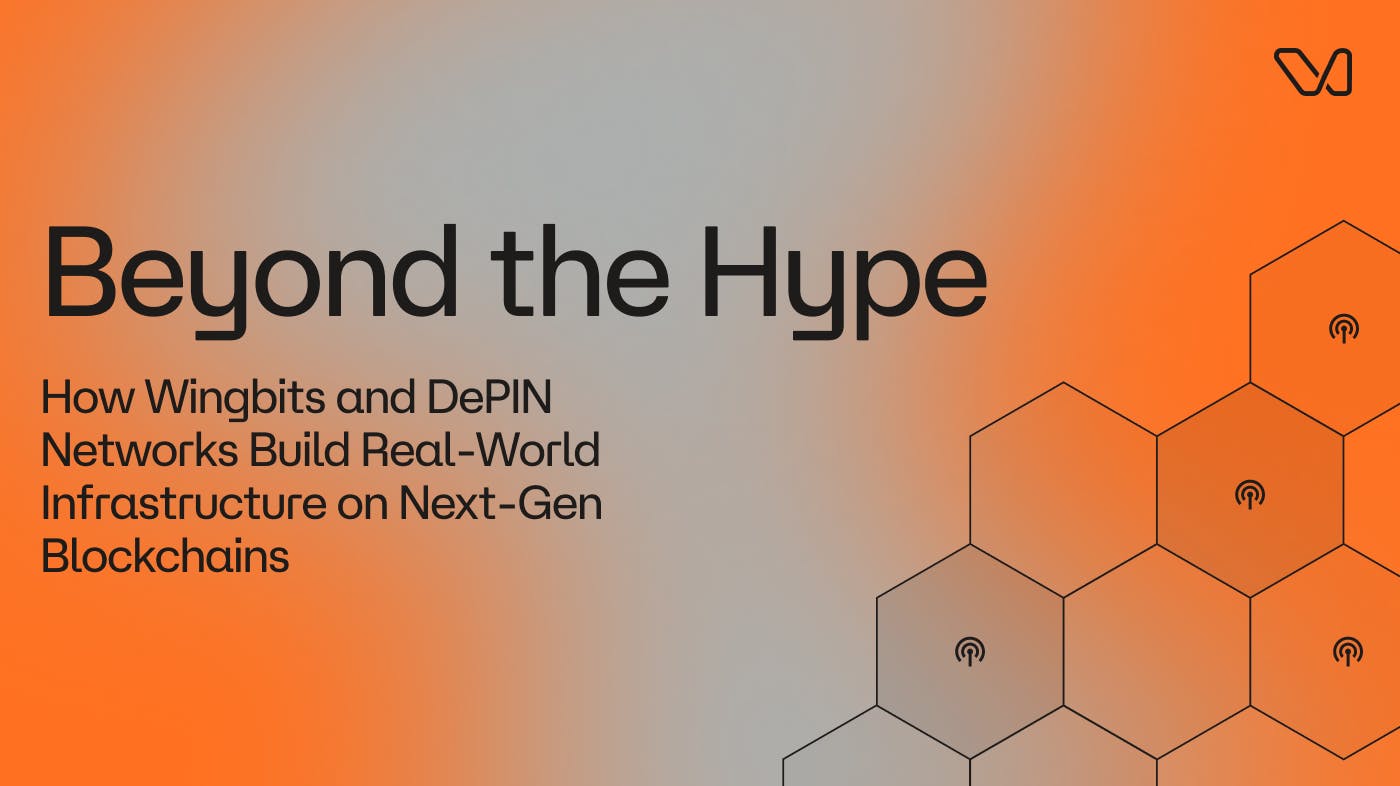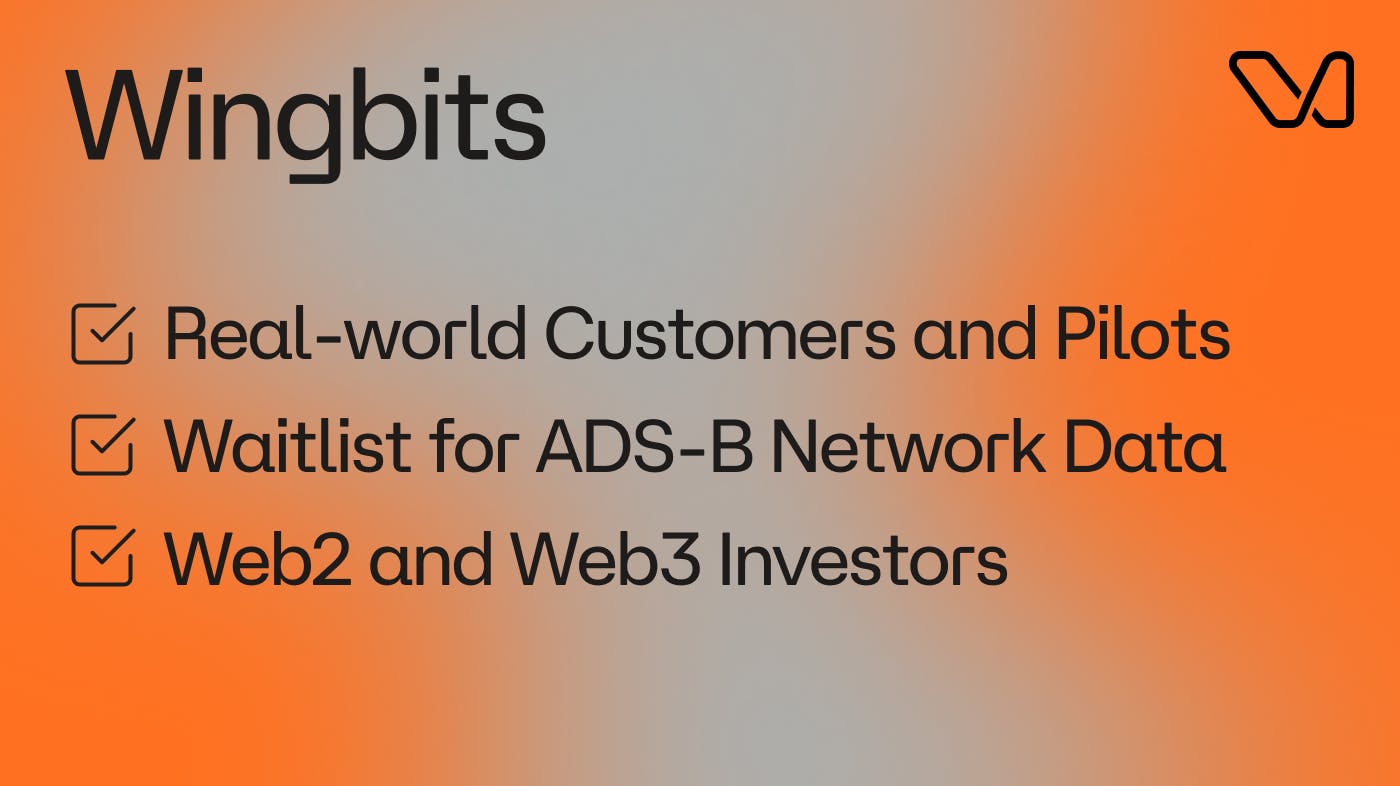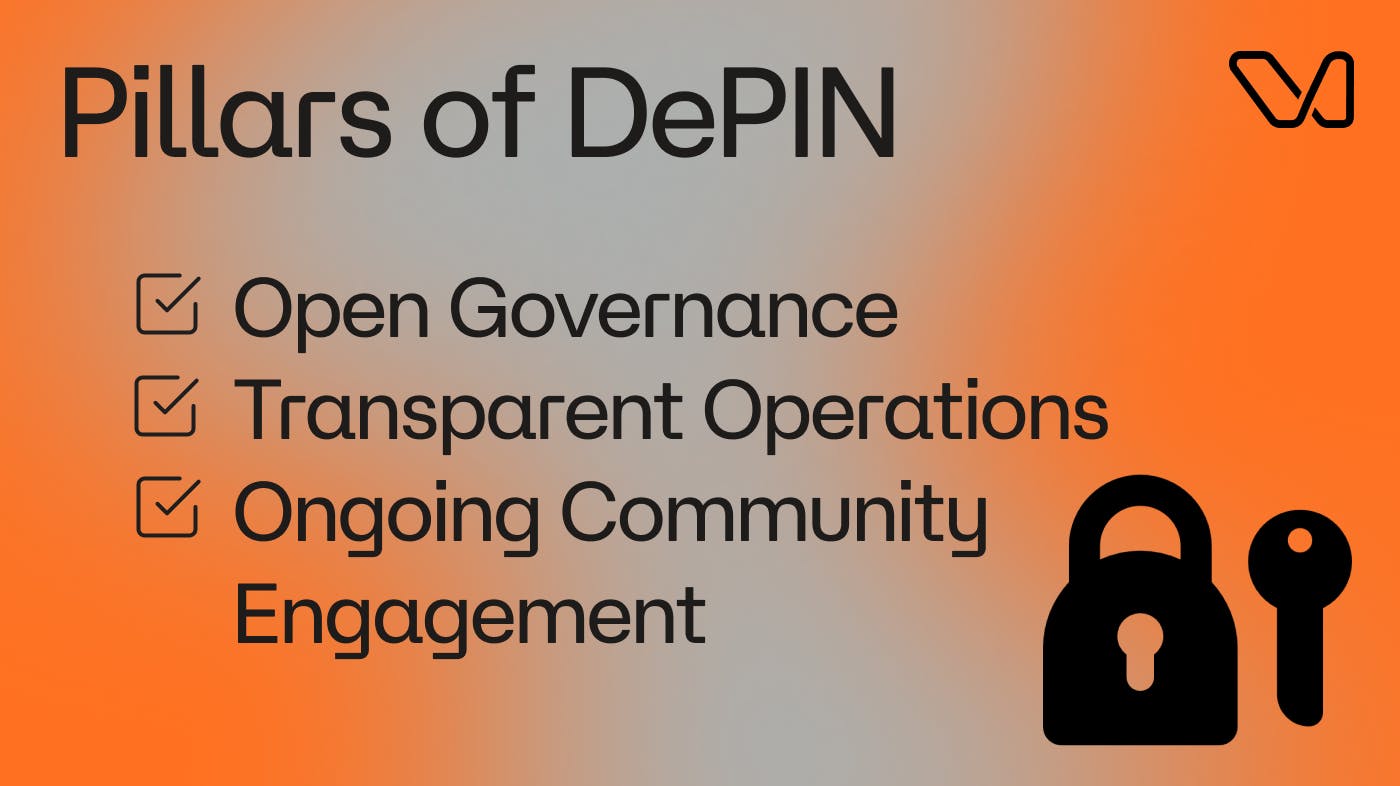Beyond the Hype: How Wingbits and DePIN Networks Build Real-World Infrastructure on Next-Gen Blockchains
Wingbits
June 10, ‘25

Picture this: Earning rewards, not from trading or speculation, but by powering the very infrastructure that keeps global aviation in motion.
This isn't some far-off vision. It's happening now, thanks to Decentralized Physical Infrastructure Networks (DePINs) like Wingbits.
Flight tracking, like many critical systems, is being reimagined: built and maintained not by a unpaid volunteers, but by distributed communities that are rewarded accordingly.
This is the future of aviation data. And it's already taking off.
Understanding DePIN – Decentralized Physical Infrastructure Networks
At its core, DePIN provides real utility to crypto, at the same time as solving real-life problems. By utilising blockchain technology to reward contributors for their data, Wingbits solves a Web2 problem with Web3 applications. It’s a movement where communities build, control, and benefit from real-world networks, not just corporations.
DePIN has evolved from a buzzword into a practical disruptor, translating big ideas into devices you can actually touch. Consider this: in just two years, active DePIN projects jumped from 650 to over 1,170, with a market cap exceeding $33 billion and over 5.7 million devices in 196 countries (Tangem, 2025). That’s not just growth, it’s proof that DePIN is building infrastructure people actually use.

Why DePINs Matter: Moving Beyond Financial Speculation
What if you could earn crypto by supporting the infrastructure that makes the world tick? That’s the heart of DePIN: connecting digital rewards to real-world impact. While financial blockchain projects focus on trading and assets, DePINs empower everyday people to contribute to and earn from critical services like energy grids, wireless networks, and decentralized flight tracking. This shift means not just better security and resilience, but real, ongoing rewards for contributors like you and me.
“DePINs integrate blockchain with physical assets, promoting decentralized control, security, and community incentives.” KuCoin
DePINs: Manage real-world infrastructure through tokenized, community-driven models think decentralized flight tracking rewards and community-owned networks.
Financial Blockchain: Focus on digital asset trading, with limited direct impact on physical infrastructure.
Of course, not every DePIN project will make it. But those that do are already transforming how we connect, store, and move resources globally. This is where the future gets built block by block.
Want to dive deeper? Explore What makes Wingbits a unique DePIN Project.
Wingbits in Action: Building the World’s First Reward-Based Decentralized Flight Tracking Network
The flight tracking industry has long relied on volunteers — passionate contributors who rarely see tangible rewards for their efforts.
Wingbits is changing that.
With Wingbits, anyone can earn crypto by running a station and sharing ADS-B data. It's a simple way to contribute to global aviation infrastructure — and get rewarded for it.
Station hosts recall setting up their Wingbits hardware and watching the data light up the live map. Seeing the $WINGS token accumulate in their dashboards didn’t just feel rewarding, it makes the station hosts feel part of aviation history in the making.
Wingbits is the first flight tracking network to directly compensate its contributors, distributing $WINGS tokens in exchange for high-quality, real-time ADS-B data.
“The current model isn't just exploitative. It's inefficient. We're setting a new standard for transparency and collaboration in aviation. It's about building a network that works better than the traditional alternatives, while treating contributors as valued stakeholders, who are the backbone of aviation data infrastructure.” - Robin Wingårdh, co-founder and CEO of Wingbits
Ever struggled with laggy flight tracking apps? The traditional model simply can’t scale. Wingbits integrates custom tracking hardware, enabling anyone to become an ADS-B data provider and earn crypto passive rewards. And with the upcoming drone-tracking boom, the opportunity to earn crypto tracking flights is about to skyrocket.
How Wingbits Ensures Data Quality, Security, and Global Coverage
Innovation means nothing without reliability. Unlike many DePIN flight tracking projects still in beta, Wingbits already has real-world customers and pilots, a waitlist for its ADS-B network data, and backing from both Web2 and Web3 investors. This isn’t just market validation. It’s a sign that decentralized flight tracking rewards can drive real adoption.
Data quality is drastically strengthened through cryptographic verification, while global coverage grows as more contributors join. The network’s dashboard lets you see your impact in real time. Whether you’re an aviation enthusiast, a researcher, or just someone seeking a new way to earn crypto passive rewards, Wingbits makes it simple and sustainable. To keep contributors motivated, Wingbits uses a dynamic rewards system that adjusts to network demand, ensuring everyone’s effort is valued for the long term.
Ready to get started? See our step-by-step guide on How to Earn Crypto with Wingbits or check out the Wingbits Hardware Overview for details on ADS-B network devices.

Why Solana? Speed, Cost, and Scalability for Mission-Critical Applications
Let’s talk tech. Why deliver incentives through Solana? Because real-time flight tracking demands both speed and affordability. Solana delivers thousands of transactions per second (TPS) with transaction fees measured in fractions of a cent. For a global ADS-B network that is rewarding its users for every flight they track, that’s not just helpful - it’s essential for ensuring reliability and scalability.
It’s worth noting: scaling blockchains as universal payments infrastructure is not just a race for throughput. Community support, ecosystem maturity, and cross-chain compatibility all play vital roles in long-term network resilience.
Cryptographic Security: Trustworthy Data for Aviation and Beyond
In aviation, trust is everything. Each aircraft movement is tracked and timestamped creating an auditable, transparent record available to all: researchers, regulators, and aviation enthusiasts alike.
Could your home hardware become the next node in a global flight tracking rewards network? With Wingbits, it’s not just possible, it’s easier than ever. Discover more about our blockchain approach in our blog post on Why We Chose Solana As Our Layer 1.
Balancing Rewards, Growth, and Supply: The Tokenomics Challenge
Designing sustainable rewards for a decentralized flight tracking network isn’t easy. If token supply outpaces real-world demand, rewards lose value. Wingbits addresses this with a carefully managed $WINGS token model matching supply to actual network growth and data needs. This approach keeps incentives meaningful for contributors while ensuring the long-term health of the ecosystem.
Why does this matter? Because reward-based DePIN networks have to balance innovation with economic reality. Clear, transparent tokenomics are what separate sustainable projects from short-lived experiments.
Social Impact and Community Ownership: Airspace for Everyone
As someone who’s advocated for decentralized and community-powered networks for years, Wingbits’ approach is inspiring. By turning everyday individuals into ADS-B data providers, Wingbits is democratizing flight tracking. This leads to more accurate, efficient, and transparent airspace where contributors are recognized and rewarded, not exploited.
How can we prevent DePINs from repeating the mistakes of centralized tech giants? The answer lies in open governance, transparent operations, and ongoing community engagement. In practice, this means contributors help shape network rules, review protocol changes, and hold the project accountable turning users into true stakeholders.

Regulation, Trust, and Transparency in an Evolving Landscape
No system is perfect. Regulatory uncertainty, especially in the U.S., is a real challenge for DePIN projects [DePINscan]. But Wingbits is building for transparency: open data, auditable token flows, and community-driven oversight. This isn’t just a checklist; it’s the foundation for lasting trust in decentralized flight tracking rewards networks.
Want to understand the details? Read the Wingbits Tokenomics Section in our Litepaper.
The Next Frontier: What’s Ahead for Wingbits and DePIN Infrastructure
Here’s where the journey really takes off. Wingbits isn’t stopping at planes; it’s gearing up for the fast-growing drone tracking market a multi-billion-dollar opportunity. With support for multiple business streams and flexible hardware, the platform is built to adapt as aviation evolves.
The broader DePIN space is booming: over 1,170 projects, 5.7 million devices, and a $33B+ market cap as of 2025 (Tangem, 2025). This isn’t just a trend, it’s the new foundation for community-powered infrastructure across the globe.
Wingbits vs. Traditional Flight Tracking Networks

Community Growth and Global Participation
The most exciting aspect of a project like Wingbits? It’s the creativity and energy of the contributors. Anyone can join, help build a decentralized flight tracking network, and earn crypto passive rewards. The network grows stronger with every new station and every new idea.
Growth brings new challenges, but with collaboration and transparency at the core, DePIN networks like Wingbits can adapt and thrive.
Ready to Shape the Skies?
Join the Wingbits community, set up your own station, and start earning $WINGS today become a pioneer in decentralized flight tracking and help redefine global airspace management. Get Started with Wingbits by registering your first station today.
FAQ
What is DePIN and how does it relate to flight tracking?
DePIN (Decentralized Physical Infrastructure Networks) leverages blockchain to power real-world infrastructure, from energy grids to data and aviation. In decentralized flight tracking, DePIN projects like Wingbits build global, community-driven ADS-B networks where contributors securely share live aircraft data and earn crypto rewards.
How do I earn crypto rewards with Wingbits?
Set up a Wingbits station with custom hardware, contribute real-time ADS-B flight data, and earn $WINGS tokens based on your data’s quality, coverage, and network demand. It’s one of the best ways to earn stable crypto rewards with hardware in the DePIN space.
Is Wingbits data more reliable than traditional flight tracking services?
Absolutely. Wingbits uses cryptographically secured data collection for higher-quality, tamper-resistant, and globally comprehensive coverage outperforming traditional, volunteer-only Web2 models. See the difference.
What makes Wingbits different from other DePIN projects?
Wingbits is the first reward-based flight tracking network with a working product, strong demand, VC backing, and a transparent, sustainable tokenomics model. It’s the top DePIN project for earning crypto tracking flights in 2025. Why Wingbits?
How does Wingbits ensure rewards remain sustainable?
Wingbits actively manages $WINGS token supply to match real-world flight data demand, preventing oversupply and maintaining long-term contributor incentives. For an in-depth look at our model, check out the Wingbits Tokenomics Deep Dive.
Can I earn crypto rewards by tracking drones?
As the drone tracking market expands, Wingbits hardware and the ADS-B network are being adapted to support drone data as well. It’s a new frontier for earning crypto passive income with DePIN technology.

Company
Wingbits is a DePIN (Decentralized Physical Infrastructure Network) that rewards community members with $WINGS tokens for monitoring aircraft in real-time using specialized ADS-B hardware. The network aligns incentives to compensate participants based on the quality and quantity of flight tracking data they contribute, creating a more equitable alternative to traditional tracking systems. By incentivizing strategic hardware placement and reliable uptime, Wingbits is building the world's largest and most secure flight tracking network while disrupting an industry that has relied on unpaid volunteers for decades.
Recommended articles
Why We Choose Solana as our Layer 1
Ray Buckton
April 3, ‘25
